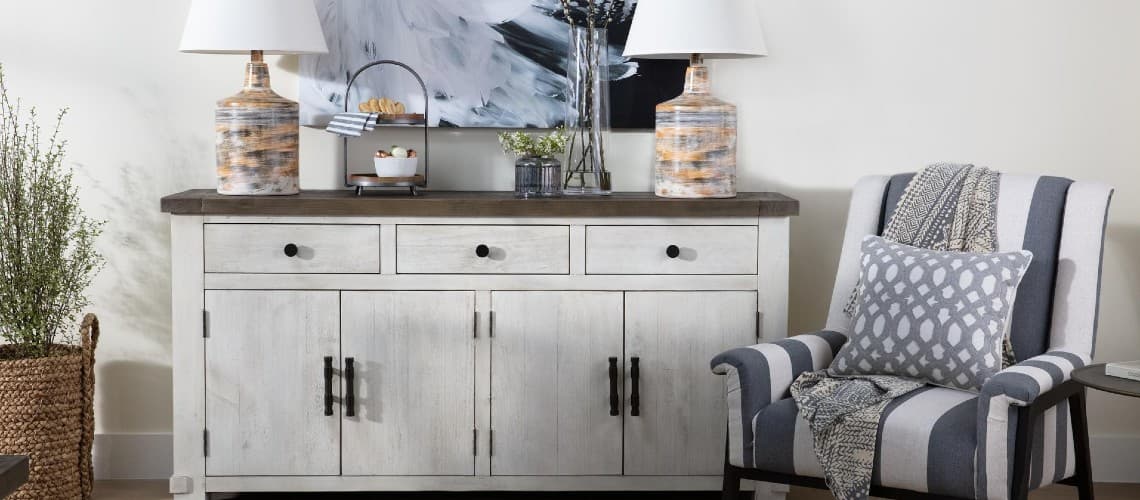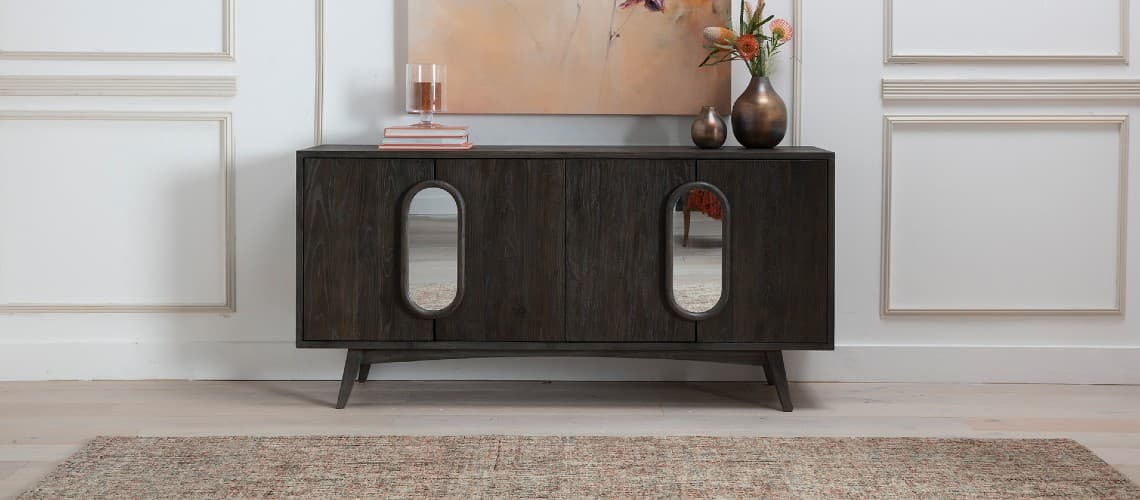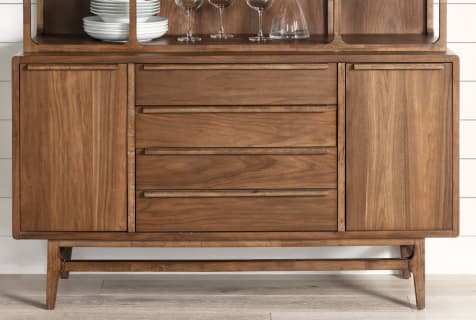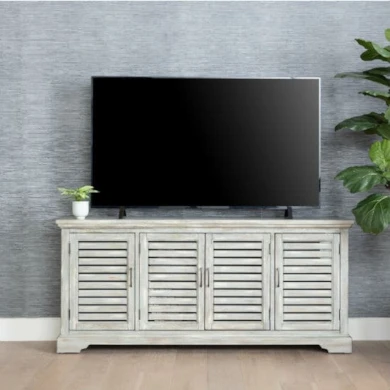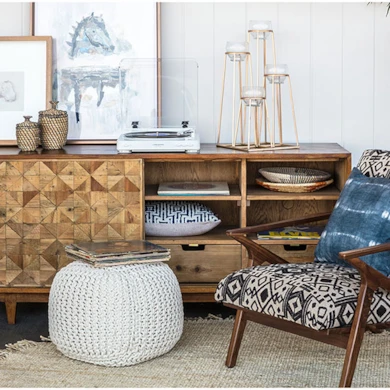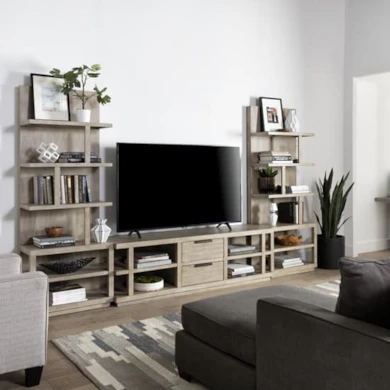Credenza vs. Buffet vs. Sideboard: What’s the Difference?
What’s the difference between a credenza and a sideboard?
A credenza is a piece of storage furniture built with no (or short) legs. As a result, a credenza gives off a low-to-the-ground appearance, often fitting in with the mid-century style of design.
A sideboard is also a piece of storage furniture; where the two differ comes down to looks. While credenzas encompass a low, simplistic shape, often with cabinet-style sliding doors, sideboards tend to be bigger, equipped with high legs and dresser-like drawers.
Can I use a credenza as a TV stand?
A credenza can be used as a TV stand – so much so, in fact, that there is a whole subcategory of credenzas known as ‘TV credenzas.’
Where a traditional TV stand and a traditional credenza differ, however, has to do with aesthetic and storage capabilities. A credenza is lower, sleeker, and contains more inner compartments than a TV stand.
What is another word for credenza?
For better or for worse, the term ‘credenza’ is often used willy-nilly to describe virtually any furniture piece used to “store things” or “place things on.” Here are a few synonyms for “credenza” – and other distinct furniture pieces the design is often confused for:
What’s a credenza for office?
A credenza for office involves the use of a credenza as a counterpart to a desk (a home office unit used to store paperwork, books and files); what a buffet is to dining furniture, an office credenza is to office furniture.
What is a hutch?
A hutch is set of shelves, usually built over a piece of furniture. Hutches are often seen above credenzas as extra storage for dishware, but they can also be used to display décor. Some hutches also contain doors or a sliding cover.
What is a sideboard?
A sideboard is a low-to-the-ground, freestanding furniture unit. It often rests on short legs and is more traditionally seen in mid-century or minimalist styles. Sideboards contain drawers or cabinet storage and are used in several areas of the home.
What is a buffet?
A buffet is a piece of furniture that is used to serve food (hence the name). Because of the buffet’s purpose, it is built not too tall and not too short; the height comes up to just about counter level, making it easy for persons to serve themselves from the surface. Buffets are designed for dining rooms.
What’s the difference between a buffet and a sideboard?
A buffet is similar to a sideboard, differing only in size. Both buffets and sideboards are large, decorative containers, outfitted with cabinet-like doors and/or storage drawers. They are often placed in dining rooms for storing and serving dishes and food, respectively. Buffets are usually larger than sideboards.
— More Great Articles —
Shop Credenzas + Buffets
Read the Latest
Editorial Disclaimer: Articles featuring tips and advice are intended for educational purposes and only as general recommendations. Always practice personal discretion when using and caring for furniture, decor and related items.
